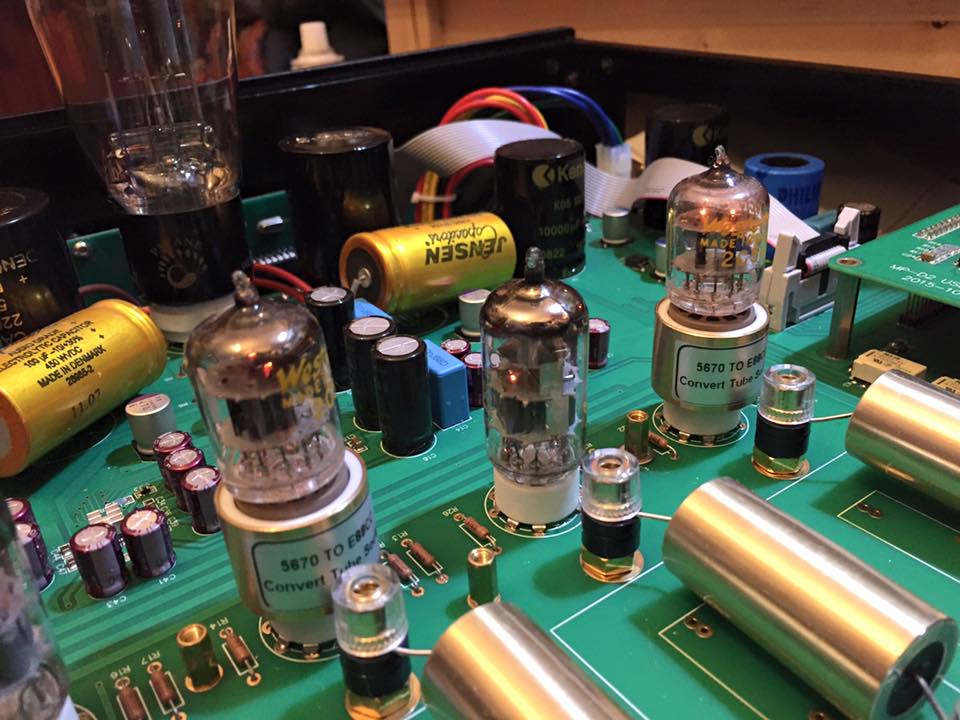There are bascially inifinte combination you can change to tweak the sound coming out from the DAC. The output cap is one area of them. There are many reasons the manufacturer put in the specific output cap. Apart from the technical requirement other reasons include such as available of parts (long terms, short term), cost of parts (whicn include this capacitor), synergies with other components, combination of the systems, ...etc. and possibliy a combination of a few of these.
In terms of technical requirement, the output of the tube circuitry usual go through an RC (capacitor coupled) which block off the DC on the tube supply. So what value of the output cap you need? Theoretical the required C and R you can use the formula fc = 1 / ( 2*PI*C*R). I checked that the resistor (couple the output cap to the ground) in my MP-D2 mkII is about 500K. Outpu cap of 1uf is plenty of juice to keep your output to less than 1Hz.
OK, this hobby is not about theories. I don't buy that either. That is why Music Paradise give you the options to change different caps (and including different values within the technical requirement) so that you can taste music differently. And kudos to MP for giving us this option. (MP wants you to tastes different caps) And thinking that the supplied cap is the best option is really not logical given there are literally thousands of caps on the market that satisfied the technical requirement.
It is impossible to hear all of them but I can taste the joy of rolling a few different caps.
Alan
I also have question about the values of cap, and here's a reply from Garry:
Me:
What is the sonic impact on using different coupling capacitor value (e.g. 1.5uf Vs 2.2uf Vs 3.7) ? or if there is any.
Garry:
If your amp input impedance is 5K-8K, using a 1.5uf coupling caps would have less deep bass. Most of amps are 47K-100K input, so 1.5-4.7uf are fine.
Me:
The reason I am asking is ,I am looking at rolling the 2 caps with Jupiter Copper. It cost more for 2.2uf than 1.5uf. And if there's no impact on sounding, it might be more reasonable to pick 1.5uf. Or if you think there are reasons for choosing higher uf value
Garry:
Depending on your amp input impedance, you need to measure it to confirm. 2.2uf usually provides deeper bass response if your amp input impedance is lower than 50K.
Me:
My amp is MP 501, so what's the impedance. Or does it also depends on the tube I use?
Garry:
MP-501 is 100K. 1.5uf is fine. Not related to tubes.
*************
For Jupiter Copper Foil it cost $35 more on each of 2.2uf over 1.5 uf.
(for some other caps, cost difference might not be as significant among cap values)
Beside, the size of the cap to fit in the space matters as well.
My impression to Jupiter copper is I think it got almost everything you need to be a decent cap.
I also tried the Jantzen Superior Z-Cap 2.2uf. I would say it's lateral from the stock cap rather than an upgrade which is more on the neutral and balance sounding. Depends on your preference. It's not the same big WOW over the stock cap as I replace with Jupiter.
***Reminder: All caps should be at least 450 VDC
For those who might not know, here's a caps shoot-out with good review among caps:
http://www.humblehomemadehifi.com/Cap.html























